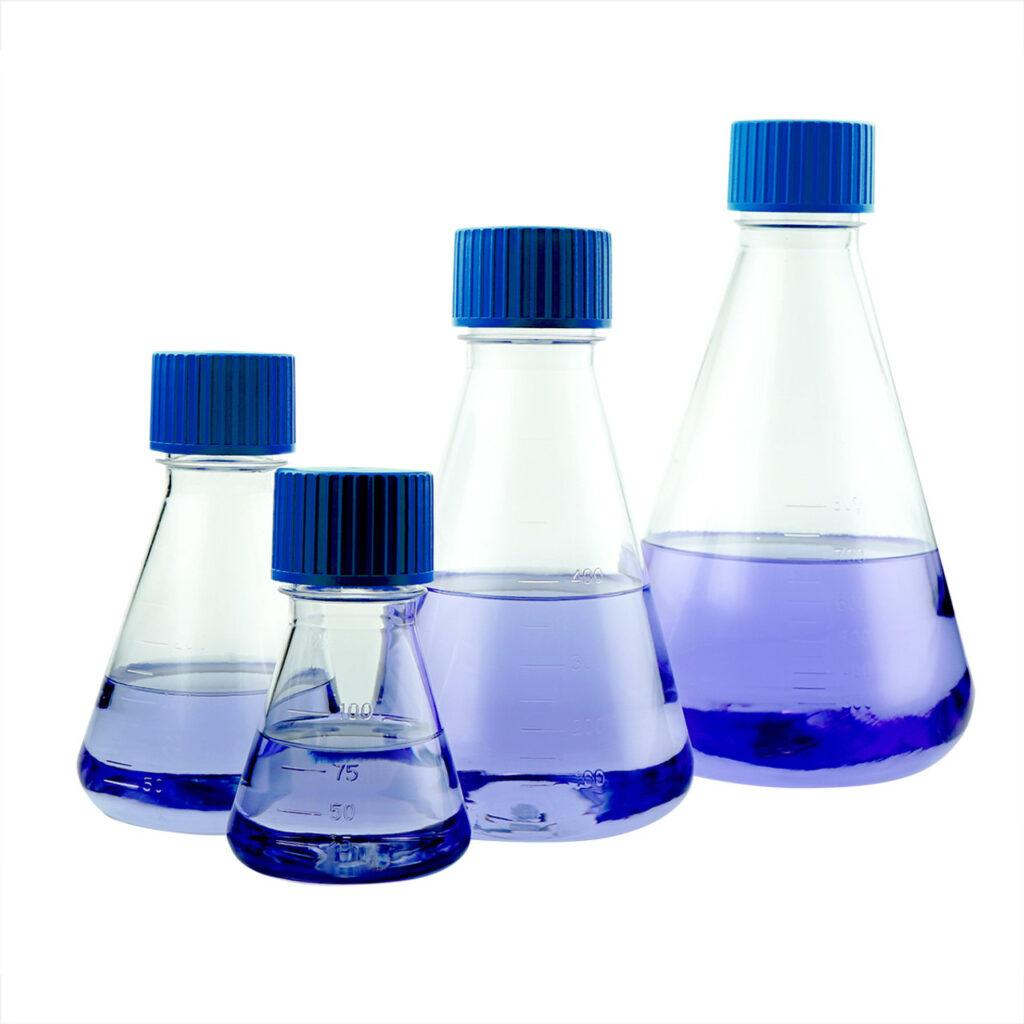Accuracy and precision are crucial in the development of scientific experiments. The tiniest contaminant can skew results, rendering hours of painstaking work futile. One of the essential tools in every scientist’s arsenal is the Erlenmeyer flask, and while it may seem like a simple piece of glassware, the right accessory can make all the difference. This brings us to the unsung heroes of laboratory containment – Erlenmeyer flask caps. In this post, we will delve into the crucial role these conical flask closures play in preventing contamination and ensuring the success of your experiments. Say goodbye to pesky contaminants and hello to peace of mind with these conical flask closures. Let’s dive in!
Understanding the Erlenmeyer Flask
Before we dive into the significance of these laboratory vessel caps, let’s first grasp the importance of the Erlenmeyer flask itself. Named after its inventor, Emil Erlenmeyer, this conical-shaped flask is a staple in laboratories across various scientific disciplines. Its design offers several advantages, including ease of swirling, efficient mixing, and reduced risk of splattering when handling liquids.
The Erlenmeyer flask is often used for a wide range of applications, such as titrations, cultures, and reagent preparations. Its versatility makes it a must-have in any lab setting. However, to harness its full potential, scientists rely on a component that is often overlooked – the Erlenmeyer flask cap.
Erlenmeyer Flask Caps: The Unsung Heroes
These laboratory vessel caps may appear unassuming, but they are vital components in maintaining the integrity of your experiments. These caps, typically made from materials like polyethylene or polypropylene, seal the flask’s mouth tightly. While the primary purpose of these conical flask closures is containment, their role extends far beyond that.
1. Contamination Prevention
The most obvious function of Erlenmeyer flask caps is to prevent contamination. In the controlled environment of a laboratory, even the tiniest particle or microorganism can wreak havoc on experiments. Contaminants can alter pH levels, introduce foreign substances, or compromise the viability of cell cultures. It acts as a protective barrier, ensuring that the contents of the flask remain pristine until they are ready for use.
2. Evaporation Control
Many experiments involve volatile substances or solutions that are sensitive to air exposure. It creates an airtight seal, significantly reducing the rate of evaporation. This control over evaporation is crucial for maintaining the concentration of solutions and ensuring the reliability of results over extended periods.
3. Safe Storage
In busy laboratory environments, it’s common to prepare solutions in advance or set aside samples for later analysis. These caps are essential for safe storage. They prevent spillage, reduce the risk of accidents, and safeguard valuable samples from environmental contaminants.
4. Temperature Stability
Certain experiments require solutions to be kept at specific temperatures. These conical flask closures aid in maintaining temperature stability by preventing heat exchange with the surroundings. This is particularly important for thermally sensitive reactions and cultures.
5. Versatility
These conical flask closures are designed to fit snugly into the flask’s mouth, ensuring a secure closure. They come in various sizes and configurations to accommodate different flask sizes and types. This versatility makes them a valuable tool for scientists working with a range of laboratory glassware.
Types of Erlenmeyer Flask Caps
These conical flask closures come in various styles and materials, each suited to different laboratory needs. Here are some common types:
- Screw Caps: These lids have threads that match the flask’s neck, allowing for a secure and leak-proof seal. Screw caps are ideal for long-term storage and preventing evaporation.
- Snap Caps: These lids snap onto the flask’s mouth, providing a tight seal. They are easy to apply and remove quickly, making them convenient for frequent access to flask contents.
- Vent Caps: Vent lids feature a small venting hole that allows for the controlled release of gas or pressure buildup while maintaining a sealed environment. They are useful for cultures or reactions that produce gas.
- Septa Caps: Septa lids have a built-in septum, which is a rubber or silicone barrier that can be pierced with a needle or syringe. They are commonly used in applications where samples need to be withdrawn or injected without exposing them to air.
Choosing the Right Erlenmeyer Flask Cap
Selecting the appropriate Erlenmeyer flask cap is crucial to ensuring the success of your experiments. Here are some factors to consider:
- Material Compatibility: Ensure that the cap material is compatible with the chemicals or solutions you will be using. Some chemicals may react with certain cap materials, leading to contamination or degradation.
- Tightness of Seal: Depending on your application, you may require a cap that provides an airtight or leak-proof seal. Screw lids typically offer the tightest seal, while snap lids are more convenient for frequent access.
- Venting Requirements: If your experiments involve the release of gas or pressure buildup, vent caps or caps with septa may be necessary.
- Size and Compatibility: Make sure the cap size matches the neck size of your Erlenmeyer flask. Caps should fit securely without any gaps or loose fittings.
- Sterility: In some cases, sterility is critical. Look for lids that are pre-sterilized or can be autoclaved to ensure a sterile environment within the flask.
Summary
Erlenmeyer flask caps may be small and seemingly insignificant, but they play a vital role in the success of laboratory experiments. Their ability to prevent contamination, control evaporation, and maintain a stable environment is crucial for achieving accurate and reliable results. Choosing the right cap for your specific application is essential, as it can make the difference between a successful experiment and a failed one.
In the world of science, where precision and accuracy are paramount, Erlenmeyer flask caps are indeed the unsung heroes. These unassuming accessories silently contribute to the advancement of knowledge, ensuring that every experiment stands on a solid foundation of purity and integrity. So, the next time you pick up an Erlenmeyer flask, remember the critical role its cap plays in safeguarding your scientific endeavors.







2 Comments
I do agree with all of the ideas you’ve presented in your post. They’re really convincing and will definitely work. Still, the posts are very short for newbies. Could you please extend them a bit from next time? Thanks for the post.
Great site! I am loving it!! Will be back later to read some more. I am bookmarking your feeds also